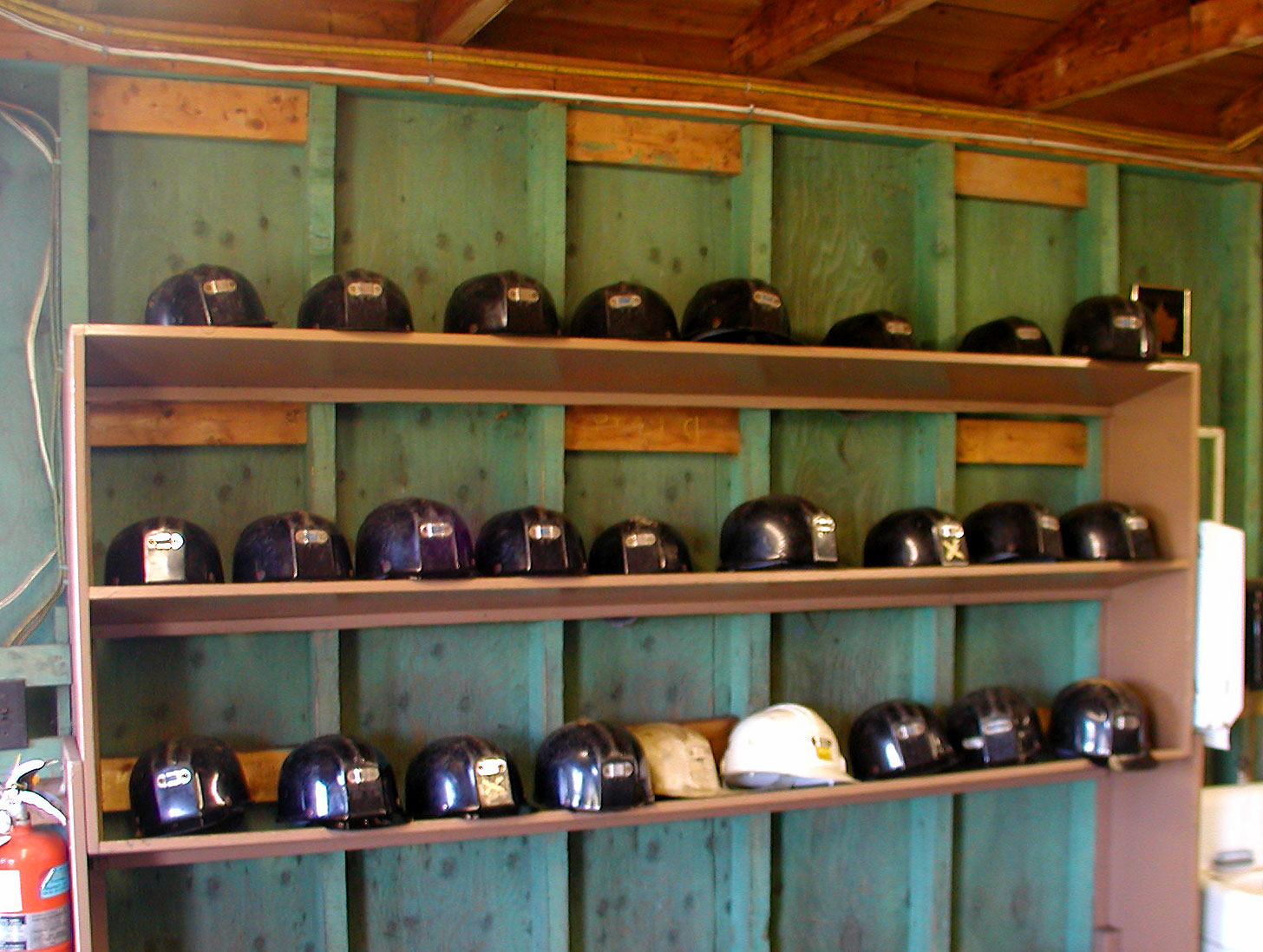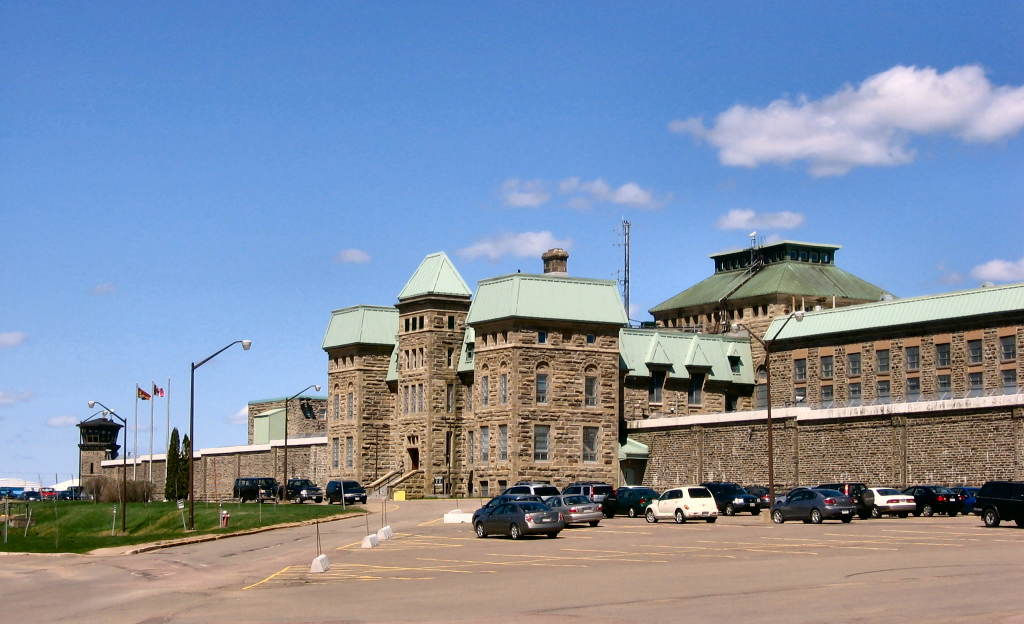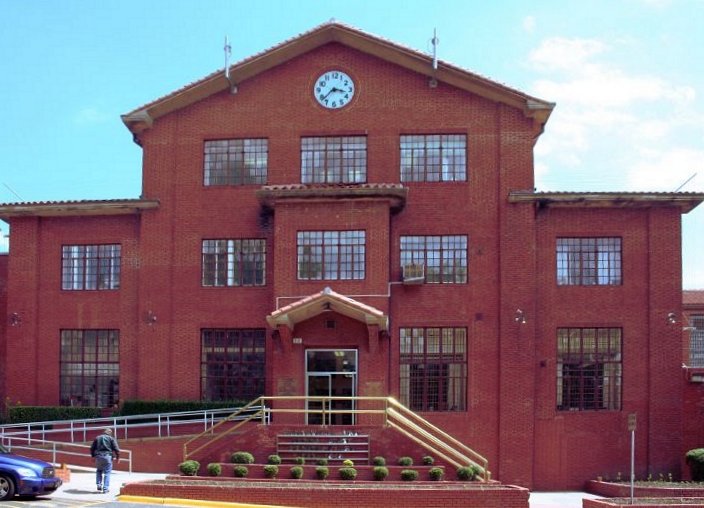|
Springhill Institution
The Springhill Institution (french: Établissement de Springhill) is a Canadian federal corrections facility located in the town of Springhill, Nova Scotia. History It was opened on 15 October 1967 on the southwestern edge of the former coal mining town on the northern edge of the Cobequid Mountains; occupying 167 hectares of land on a plateau overlooking the area, it is described as the largest "fenced" correctional facility in Canada.correctional Service CanadaInstitutional Profiles: Springhill Institution Accessed June 15, 2014 Springhill was selected as the site for the medium security prison for Atlantic Canada during the early 1960s, partly as an economic diversification strategy following the closure of the town's largest employer, a coal mine that was permanently shut in 1958 following the Springhill Mining Disaster Springhill mining disaster may refer to any of three deadly Canadian mining disasters that occurred in 1891, 1956, and 1958 in different mines within the ... [...More Info...] [...Related Items...] OR: [Wikipedia] [Google] [Baidu] |
Springhill, Nova Scotia
Springhill is a community located in central Cumberland County, Nova Scotia, Canada. The community was founded as "Springhill Mines." Coal mining led to economic growth, with its incorporation as a town in 1889. The mines in the Springhill coalfield were established in the 19th century, and by the early 1880s were being worked by the Cumberland Coal & Railway Company Ltd. and the Springhill & Parrsboro Coal & Railway Company Ltd. These entities merged in 1884 to form the Cumberland Railway & Coal Company Ltd., which its investors sold in 1910 to the industrial conglomerate Dominion Coal Company Ltd. (DOMCO). All coal mining had ceased in the area by the early 1970s. The community is famous for both the Springhill Mining Disaster and being the childhood home of international recording star Anne Murray, who is honoured by the Anne Murray Centre, a popular tourist attraction. As of 2015 the mine properties, among the deepest in the world, with the No. 2 mine reaching 14,300 fe ... [...More Info...] [...Related Items...] OR: [Wikipedia] [Google] [Baidu] |
Correctional Service Of Canada
The Correctional Service of Canada (CSC; french: Service correctionnel du Canada), also known as Correctional Service Canada or Corrections Canada, is the Canadian federal government agency responsible for the incarceration and rehabilitation of convicted criminal offenders sentenced to two years or more. The agency has its headquarters in Ottawa, Ontario. The CSC officially came into being on April 10, 1979, when Queen Elizabeth II signed authorization for the newly commissioned agency and presented it with its armorial bearings. The Commissioner of the CSC is recommended for appointment by the Prime Minister and approved by an Order in Council. This appointed position reports directly to the Minister of Public Safety and Emergency Preparedness and is accountable to the public via the Parliament. The current Commissioner of the CSC is Anne Kelly, who served as the senior deputy commissioner prior to the retirement of Don Head in February 2018. Insignia In addition to usin ... [...More Info...] [...Related Items...] OR: [Wikipedia] [Google] [Baidu] |
Nova Scotia
Nova Scotia ( ; ; ) is one of the thirteen provinces and territories of Canada. It is one of the three Maritime provinces and one of the four Atlantic provinces. Nova Scotia is Latin for "New Scotland". Most of the population are native English-speakers, and the province's population is 969,383 according to the 2021 Census. It is the most populous of Canada's Atlantic provinces. It is the country's second-most densely populated province and second-smallest province by area, both after Prince Edward Island. Its area of includes Cape Breton Island and 3,800 other coastal islands. The Nova Scotia peninsula is connected to the rest of North America by the Isthmus of Chignecto, on which the province's land border with New Brunswick is located. The province borders the Bay of Fundy and Gulf of Maine to the west and the Atlantic Ocean to the south and east, and is separated from Prince Edward Island and the island of Newfoundland by the Northumberland and Cabot straits, ... [...More Info...] [...Related Items...] OR: [Wikipedia] [Google] [Baidu] |
Coal Mining
Coal mining is the process of extracting coal from the ground. Coal is valued for its energy content and since the 1880s has been widely used to generate electricity. Steel and cement industries use coal as a fuel for extraction of iron from iron ore and for cement production. In the United Kingdom and South Africa, a coal mine and its structures are a colliery, a coal mine is called a 'pit', and the above-ground structures are a 'pit head'. In Australia, "colliery" generally refers to an underground coal mine. Coal mining has had many developments in recent years, from the early days of men tunneling, digging and manually extracting the coal on carts to large open-cut and longwall mines. Mining at this scale requires the use of draglines, trucks, conveyors, hydraulic jacks and shearers. The coal mining industry has a long history of significant negative environmental impacts on local ecosystems, health impacts on local communities and workers, and contributes heavily to th ... [...More Info...] [...Related Items...] OR: [Wikipedia] [Google] [Baidu] |
Cobequid Mountains
The Cobequid Mountains, also sometimes referred to as the Cobequid Hills, is a Canadian mountain range located in Nova Scotia in the mainland portion of the province. Geologic history Geologically, the Cobequid Mountains are considered part of the Appalachians. The range stretches from Cape Chignecto in Cumberland County in the west through to Pictou County in the east. The Cobequid Mountains trace their geologic history to the Precambrian and Devonian ages; consequently the mountains are composed of a combination of sediments, granites, and volcanic rock all of which has been crushed and folded by continental drift when this part of Nova Scotia was located at the centre of the Pangea supercontinent. Subsequent erosion over millions of years has resulted in the present-day low range of mountains and rolling hills. The part of northern Nova Scotia which contains the Cobequid Mountains is believed to have been linked with what is now northern Europe. Its collision with a section ... [...More Info...] [...Related Items...] OR: [Wikipedia] [Google] [Baidu] |
Springhill Mining Disaster
Springhill mining disaster may refer to any of three deadly Canadian mining disasters that occurred in 1891, 1956, and 1958 in different mines within the Springhill coalfield, near the town of Springhill in Cumberland County, Nova Scotia. In the 1891 accident, 125 died; in 1956, 39 were killed; and in 1958, there were 75 miners killed. The mines in the Springhill coalfield were established in the 19th century, and by the early 1880s were being worked by the Cumberland Coal & Railway Company Ltd. and the Springhill & Parrsboro Coal & Railway Company Ltd. These entities merged in 1884 to form the Cumberland Railway & Coal Company Ltd., which its investors sold in 1910 to the industrial conglomerate Dominion Coal Company Ltd. (DOMCO). Following the third disaster in 1958, the operator Dominion Steel & Coal Corporation Ltd. (DOSCO), then a subsidiary of the A.V. Roe Canada Company Ltd., shut its mining operations in Springhill, and they were never reopened. the mine properti ... [...More Info...] [...Related Items...] OR: [Wikipedia] [Google] [Baidu] |
Atlantic Institution
Atlantic Institution (french: Établissement de l'Atlantique " . Retrieved on October 7, 2014.) is a Canadian federal corrections facility located in the community of Renous, . It is in proximity to |
Dorchester Penitentiary
The Dorchester Penitentiary ( French: Pénitencier de Dorchester) is a Canadian federal corrections facility located in the village of Dorchester, New Brunswick. It shares a property with Westmorland Institution and Shepody Healing Centre. History It was opened on 14 July 1880 as a maximum security penitentiary on a hill overlooking the Memramcook River valley. It is now, having been built three years after Stony Mountain Institution (1877), the second oldest federal corrections facility in Canada still in operation following the closure of Kingston Penitentiary on September 30, 2013. The prison became notorious following World War II as it was responsible for all maximum security offenders in Atlantic Canada. It was replaced by the modern Atlantic Institution in Renous and was downgraded to handle medium security offenders. Together with Springhill Institution, Dorchester Penitentiary handles all medium security offenders in the federal system in Atlantic Canada. ... [...More Info...] [...Related Items...] OR: [Wikipedia] [Google] [Baidu] |
Correctional Service Of Canada Institutions
In criminal justice, particularly in North America, correction, corrections, and correctional, are umbrella terms describing a variety of functions typically carried out by government agencies, and involving the punishment, treatment, and supervision of persons who have been convicted of crimes. These functions commonly include imprisonment, parole, and probation. Bryan A. Garner, editor, ''Black's Law Dictionary'', 9th ed., West Group, 2009, , 0-314-19949-7, p. 396 (or p. 424 depending on the volume) A typical ''correctional institution'' is a prison. A ''correctional system'', also known as a ''penal system'', thus refers to a network of agencies that administer a jurisdiction's prisons, and community-based programs like parole, and probation boards. This system is part of the larger criminal justice system, which additionally includes police, prosecution and courts. Jurisdictions throughout Canada and the US have ministries or departments, respectively, of corrections, co ... [...More Info...] [...Related Items...] OR: [Wikipedia] [Google] [Baidu] |
Buildings And Structures In Cumberland County, Nova Scotia
A building, or edifice, is an enclosed structure with a roof and walls standing more or less permanently in one place, such as a house or factory (although there's also portable buildings). Buildings come in a variety of sizes, shapes, and functions, and have been adapted throughout history for a wide number of factors, from building materials available, to weather conditions, land prices, ground conditions, specific uses, prestige, and aesthetic reasons. To better understand the term ''building'' compare the list of nonbuilding structures. Buildings serve several societal needs – primarily as shelter from weather, security, living space, privacy, to store belongings, and to comfortably live and work. A building as a shelter represents a physical division of the human habitat (a place of comfort and safety) and the ''outside'' (a place that at times may be harsh and harmful). Ever since the first cave paintings, buildings have also become objects or canvasses of much artistic ... [...More Info...] [...Related Items...] OR: [Wikipedia] [Google] [Baidu] |
Prisons In Nova Scotia
A prison, also known as a jail, gaol (dated, standard English, Australian, and historically in Canada), penitentiary (American English and Canadian English), detention center (or detention centre outside the US), correction center, correctional facility, lock-up, hoosegow or remand center, is a facility in which inmates (or prisoners) are confined against their will and usually denied a variety of freedoms under the authority of the state as punishment for various crimes. Prisons are most commonly used within a criminal justice system: people charged with crimes may be imprisoned until their trial; those pleading or being found guilty of crimes at trial may be sentenced to a specified period of imprisonment. In simplest terms, a prison can also be described as a building in which people are legally held as a punishment for a crime they have committed. Prisons can also be used as a tool of political repression by authoritarian regimes. Their perceived opponents may be ... [...More Info...] [...Related Items...] OR: [Wikipedia] [Google] [Baidu] |







